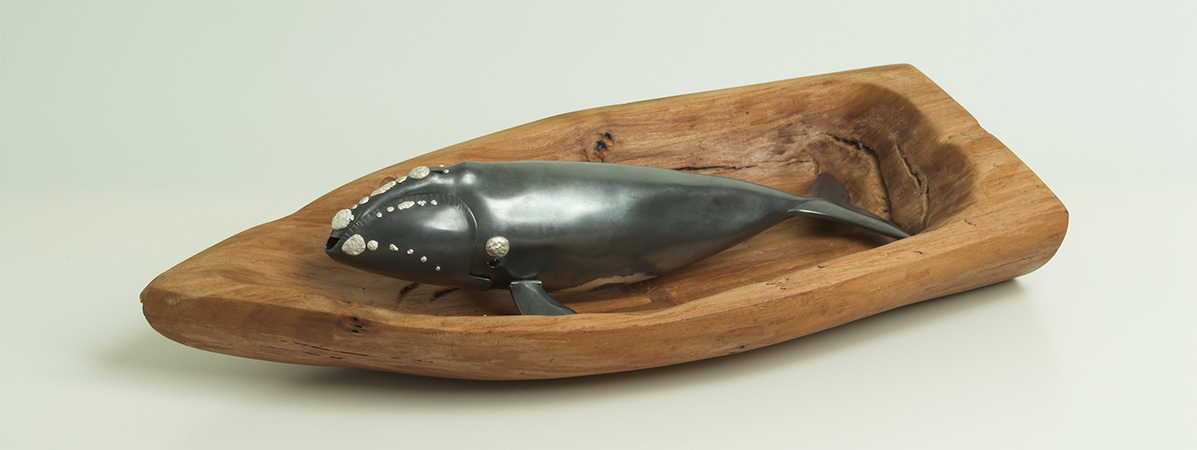The North Pacific Right whale (Eubalaena japonica) is a very large, thickset baleen whale species that is extremely rare and endangered. They reach 15 to 18.3 m in length as adults, larger than the North Atlantic right whale.Typical body mass is from 50,000–80,000 kg. They have calcified patches of rough skin called callosities on their heads, which are unique to all right whale species. One theory is that where they used to have hair. They have very large heads and mouths that allows them to swim with their mouths open, the water with the copepods flowing in, then flowing sideways through the right whale’s very long, very fine baleen trapping the copepods, and then out over their large lower lips.

photo by Jöel Degen
©Rie Taniguchi
Hundreds of years of commercial whaling decimated the species by the early 1900s. The species got its name as the “right” whale to hunt: these animals swim slowly close to shore and are so blubber-rich they float when dead.
The taking of right whales in commercial whaling has been prohibited by one or more international treaties since 1935. Nevertheless, between 1962 and 1968, illegal Soviet whaling killed at least 529 right whales in the Bering Sea and Gulf of Alaska as well as at least 132 right whales in the Sea Okhotsk. plus an additional 104 North Pacific right whales from unspecified areas.
The Northeast Pacific population may have no more than 40 animals. A western population is thought to number in the low hundreds.
IUCN categorises the species as “Endangered”, and categorises the Northeast Pacific population as “Critically Endangered”. The Center for Biological Diversity argues that the North Pacific right whale is the most endangered whale on Earth.
These massive marine mammals migrate each year, risking the two most significant source of mortality, collisions with ships and entanglement in commercial fishing gear among other anthropogenic impacts.